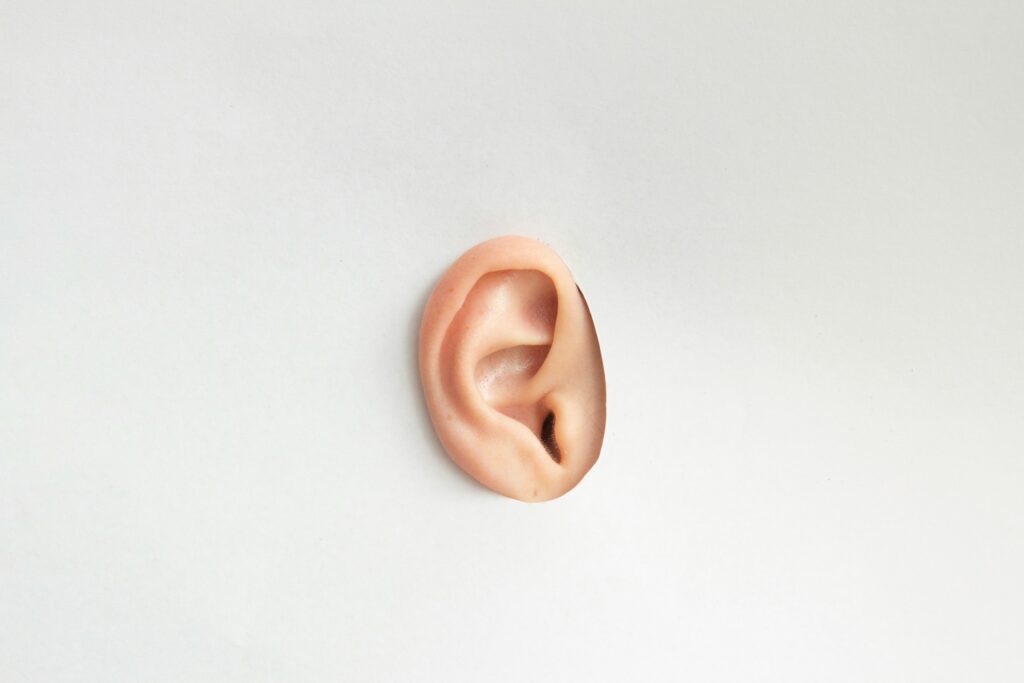
What constitutes effective communication?
For effective communication to happen, we need one who speaks and one who listens.
The latter part is, however, often overlooked.
We, humans, aren’t that great at just listening, however simple it might seem: shut up, be quiet, and do nothing.
Yet, it’s something most of us struggle with.
Enter Active listening.
Active listening requires you to focus entirely on the speaker, understand their message, comprehend the information and respond thoughtfully.
In this article, we’ll identify what active listening is, why it’s important to hone that skill and nine methods for improving your active listening skills.
Discover all our topics on training techniques.
Active listening means listening intentionally.
So, not – “Was that question for me?”
Active listening is fully listening to the other person rather than just waiting to respond.
The concept is simple: You need to be consciously present and avoid distractions, forming counterarguments while the other person is speaking or losing focus when you get bored.
Active listening was first introduced by Carl Rogers and Richard Farson in 1957.
Given our time to practice, you would think we’d be good at it!
Most of us aren’t. Research suggests that we can only retain between 25 per cent and 50 per cent of what we hear.
So remember that in a 10-minute conversation with your boss, colleagues, customers, or spouse, they may only pay attention to less than 5 minutes of what you say.
Active listening occurs when you hear what someone says and tune into their thoughts and feelings. It’s the thing that turns a conversation into an active, non-competitive, two-way interaction.
According to Robin Abrahams and Boris Groysberg from Harvard Business School, active listening has three components:

Maintaining eye contact with the speaker demonstrates your presence and attentiveness to what is being said. It also demonstrates that nothing else around you is distracting you.
Nodding your head and leaning slightly forward indicates to the speaker that you are interested in what they are saying. This gesture shows that you are engaged and actively listening to the speaker.
How well are you truly listening if you’re bouncing on your chair and constantly moving your pillow around to get comfortable?
You might hear what the speaker is saying, but you are not actively listening to their message.
So, sit down and focus on the speaker, avoid distractions and anything else happening around you.
Ever heard the phrase “All good things come to those who wait”?
Patience is a crucial aspect of active listening as it enables the other person to speak without interruption and gives them sufficient time to express their thoughts without interruption.
It’s important to avoid filling the gaps of silence with your own stories or ideas; instead, you should act as an acoustic panel and let the other person speak freely. When people feel they can confide in you without fear of judgment or interruption, they are more likely to open up and share their thoughts. This is particularly useful when you meet a new customer or business contact with whom you want to develop a long-term working relationship.
After the person has spoken, confirm what you heard. This active listening technique ensures that you’ve captured their thoughts, ideas, and emotions accurately.
Asking “yes or no” questions can be unproductive, often resulting in short, non-descriptive answers. This can hinder active listening and make it difficult to understand the other person’s perspective fully.
It is better to ask open-ended questions to show a genuine interest in the conversation and the speaker. These questions encourage the speaker to share their thoughts and feelings in more detail. Examples of open-ended questions include “How did you feel about that?” “Why did that happen?” and “What are your thoughts now?”
By asking open-ended questions, you can better understand the conversation and make the other person feel valued. This helps to build stronger relationships and improve communication.

Paying attention to non-verbal cues can reveal much about a person and what they are trying to communicate. For instance, if they talk rapidly or fidget a lot, it could indicate that they are nervous or anxious. On the other hand, if they speak and move slowly, they may be relaxing or thoughtfully considering their words.
Your non-verbal behaviours during active listening are equally important. Use open, non-threatening body language to show that you are genuinely engaged. This could include not crossing your arms and smiling while listening.
As listeners, we must acknowledge that our personal filters, assumptions, judgments, and beliefs can sometimes distort what we hear. Therefore, as listeners, our role should be to truly understand what the speaker is saying. This may require us to reflect on what the speaker is saying and ask questions for clarification.
Active listening involves de-centring ourselves from our own fixed position and being fully present with the other person. This approach helps people feel more understood and strengthens relationships. It also signals our willingness to empathize with the other person’s perspective rather than solely focusing on ourselves.
Remaining neutral and non-judgmental in your responses is crucial when you want others to feel comfortable enough to share their thoughts. This approach ensures that the other person feels safe, trusting that they will not face shame, criticism, blame, or negative reception in any way.
Allow the speaker to finish each point before asking questions. It’s important not to interrupt with counterarguments, as this can make the other person feel defensive and shut down the conversation.

Have you ever had a conversation where you felt the other person wasn’t really listening to you? It can be frustrating when you’re unsure if your message is getting across or if it’s even worth continuing to speak.
That’s why active listening is such an important skill.
But by becoming a better listener, you can improve your productivity and ability to influence, persuade, and negotiate. In other words, you’ll be the Jordan Belfort of empathy.
Active listening can positively impact many critical areas of your life, including your relationships, work, and social interactions.
Active listening involves recognizing that the conversation is more about the other person than about you, which can help you better understand their point of view and respond with empathy.
Active listening is a crucial skill to have in the workplace, especially if you hold a supervisory position or frequently interact with colleagues. It enables you to understand problems and collaborate with others to come up with workable solutions. Additionally, it showcases your patience, a highly valued trait in the workplace.
When you demonstrate your ability to genuinely listen to what others say, people will take more interest in communicating with you. As a leader, building trust and respect with those around you is vital; honing your active listening skills can significantly aid in achieving these goals.
Read more about motivational leadership.
People who can actively listen and empathize are skilled at starting and sustaining conversations.
Active listening not only allows the speaker to feel more acknowledged and heard, but it also assists the listener in gaining more knowledge and comprehension. It fosters a sense of connection and cooperation between both parties, making it a crucial tool for effective communication.
Active listening is a crucial skill that many people take for granted. We often assume that we are good listeners and that others know they are being heard. However, the truth is that good listening skills are a scarce commodity.
Even if we have the best intentions, we may unconsciously signal that we are not listening attentively. If you struggle with the following issues, you may need to brush up on your active listening techniques:
If you answered yes to any of these questions, don’t worry; you are not alone.
There are three barriers to effective listening: Environmental, Physiological, and Psychological.

These barriers include noises, bad cell reception, smells, and other factors making it difficult to hear and process information.
Environmental barriers can not be eliminated, but they can be managed.
These barriers have to do with the listener’s body, such as hearing loss and deficiencies, headaches, earaches, stomach aches – you get where I’m going – any type of ache. Physiological barriers can also include hunger and fatigue.
Another element of the physiological barrier is a concept known as speech-thought differential.
Our brain can think 500-3,000 words per minute, while the average rate of speech is just around 125 words per minute.
So, for your brain, the words coming from the speaker are like listening to the Matrix as the bullets come flying towards you. This makes listening extremely difficult – because our Darwin survival-of-the-fittest brain is busy with a bunch of stuff whilst the speaker is still working on finishing their sentence. So, when the speaker has finished talking, we already know what we’ll answer, our next question, and what we’ll have later for dinner.
Can you imagine what that does to our listening skills?
Psychological barriers interfere with one’s willingness and mental capacity for listening. Pre-existing biases can lead to listening to someone else’s argument for its weaknesses, ignoring its strengths. Individuals in conflict often mindlessly contradict each other.
NaviMinds provides a range of highly effective human factors courses and crew management training programs that empower managers, employees, and leaders to transcend basic active listening skills. With our cutting-edge training, you’ll learn to truly listen and comprehend others, including the facts, feelings, and values that may be concealed behind their words.
Enhance your communication with team members, foster stronger relationships, and achieve more efficient and effective collaboration.
Dive into our insightful and informative articles that will help you explore more and get ahead of the competition.
© 2024 NaviMinds – Designed by Aveo web&marketing